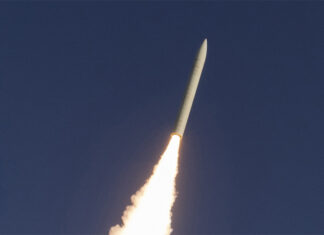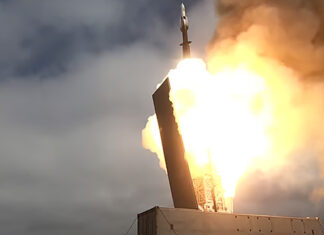Boeing, Northrop Grumman and Lockheed Martin are competing on the technology development phase of the next generation Standard Missile-3 Block IIB (SM-3 IIB) ballistic missile interceptor. Designated ‘Next Generation Aegis Missile’ (NGAM), the new missile will be developed for the U.S. Missile Defense Agency, becoming a key component of the Obama administration’s Phased Adaptive Approach for missile defense in Europe.
The new missile will be optimized for such early intercept engagements, increase the area defended by each vessel or ground based interceptor site. In addition, the new missile will introduce early intercept capability against Intercontinental Ballistic Missiles (ICBM).
By early 2011 the agency is planning to award up to three NGAM contracts next year for a 32 month concept definition and program planning phase. Therefore, all three teams could remain in the game at least until the missile development phase starting 2013.
This initial phase will focus on defining design objectives, conducting trade studies to establish a technical baseline, reducing technology risk and developing an executable program plan. A competitive product development phase will follow. The new missile is scheduled to enter service around 2020.
The new interceptor will be designed to provide early intercept capability against some short range ballistic missiles, all medium range ballistic missiles, all intermediate range ballistic missiles and non-advanced intercontinental ballistic missiles. The Next-Generation Aegis Missile will provide early intercept capability against intermediate- and long-range ballistic missile threats as a key element of the Phased Adaptive Approach, which will provide robust defensive capabilities against regional threats on a global basis. The new missile will integrate into the Aegis Weapon System – on land and at sea, it will become part of the Aegis BMD 5.1 and be compatible with existing MK 41 Vertical Launching System. MDA also requires the new missile to maximize High Altitude Exo-Atmospheric Nuclear Survivability (HAENS) and use multi-frequency data link providing highly survivable connectivity during intercept.
More on the Next Generation Missiles:



















